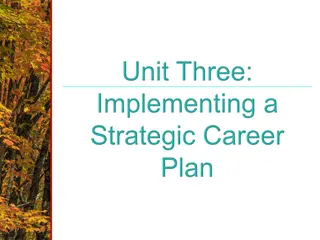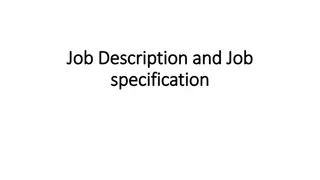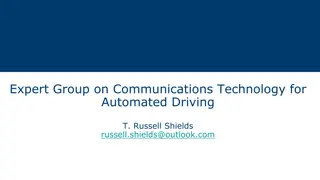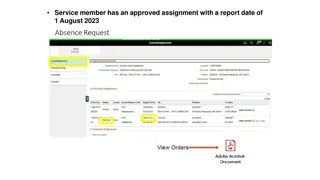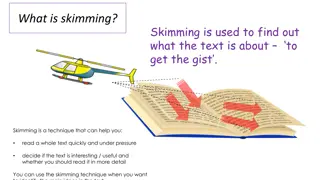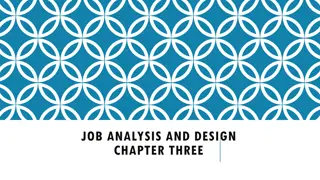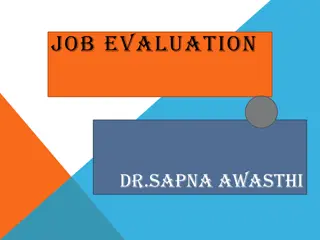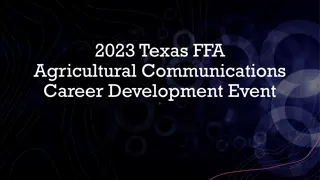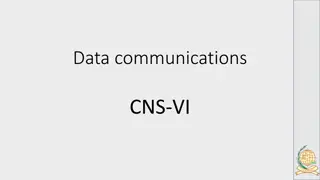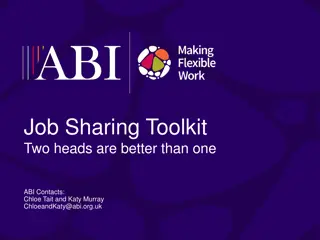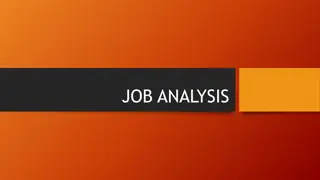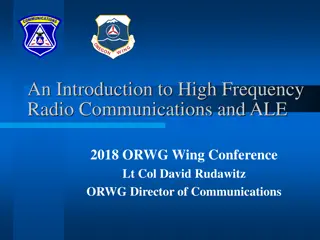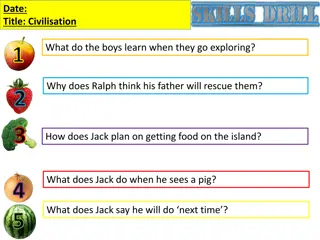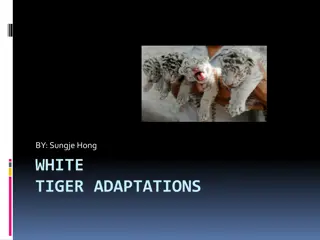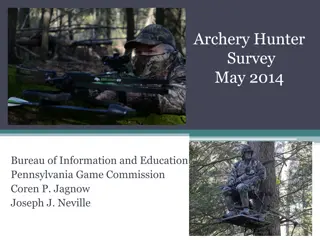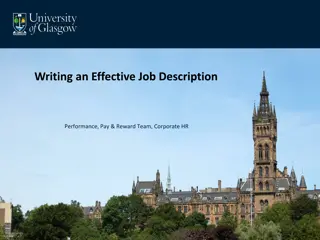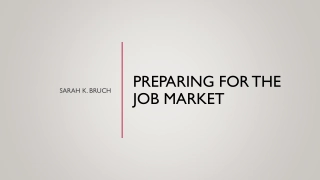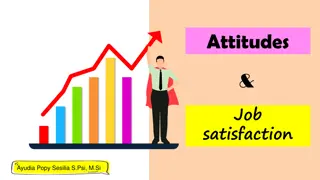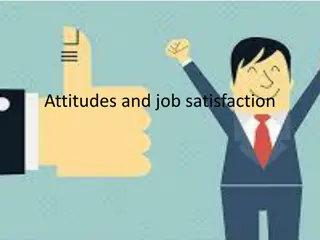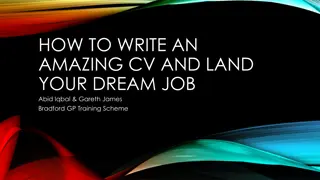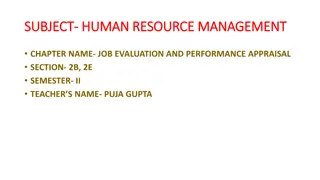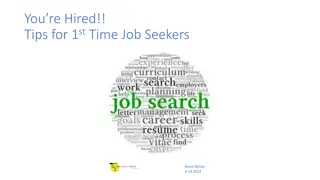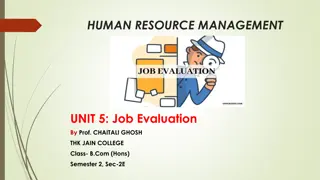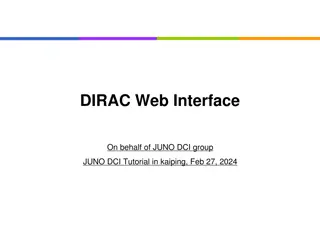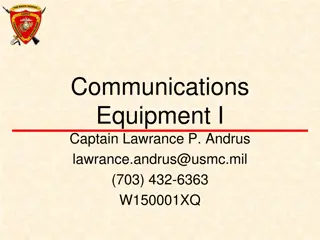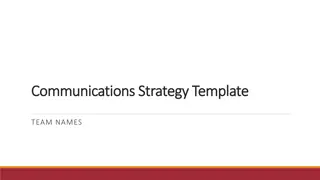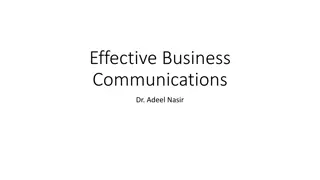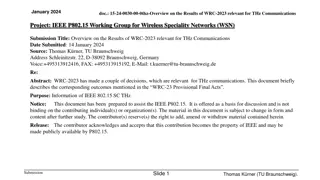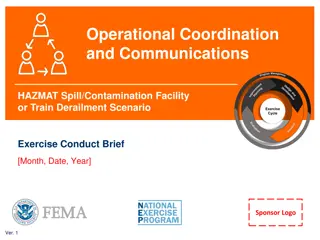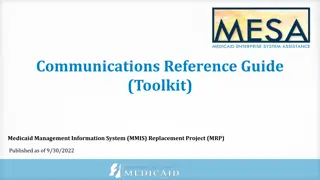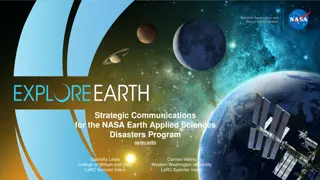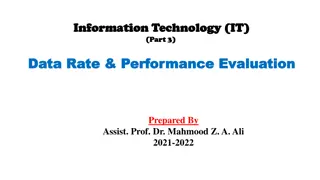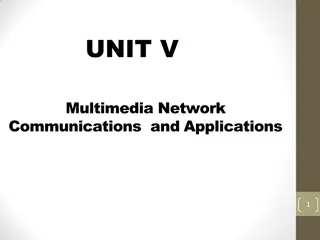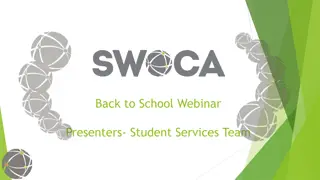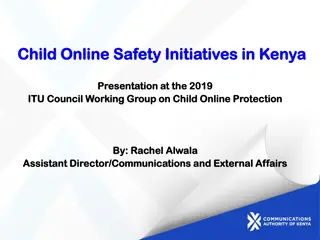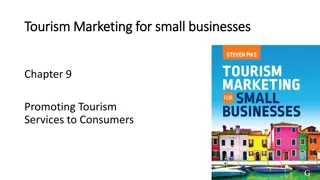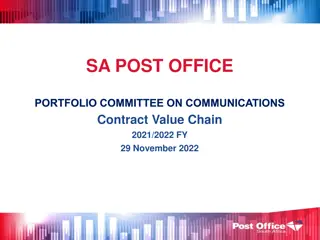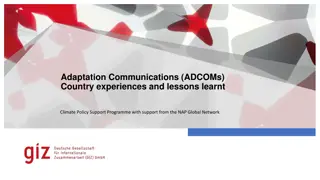Effective Written Communications in Job Hunting
Gain insights on letters in the job search process, resume writing tips, cover letter essentials, and interview correspondence. Enhance your job application skills through this detailed presentation overview.
Download Presentation

Please find below an Image/Link to download the presentation.
The content on the website is provided AS IS for your information and personal use only. It may not be sold, licensed, or shared on other websites without obtaining consent from the author. Download presentation by click this link. If you encounter any issues during the download, it is possible that the publisher has removed the file from their server.
E N D
Presentation Transcript
Written Communications in Job Hunting
Presentation Overview Letters in the job search process Resume writing Resume tips Resume vs. vita References/recommendation letters Transcripts & co-curricular transcripts Record keeping CIP perspective
Letters in the Job Search Process Letter of inquiry Cover letter Broadcast vs. Targeted approach What s the difference? See sample outline in Figure 12.2 Tips on preparing effective cover letters Letters in the electronic age
Cover Letter 1st paragraph Opening Reason for writing Name of position, career area How you heard of the opening 2nd paragraph Body Mention related experience/qualifications Slant to employing organization Why interested in organized, position, location Refer reader to any enclosed materials
Cover Letter 3rd paragraph Closing Request opportunity to visit employer, suggesting possible date/time Indicate when you might follow up Thank reader for considering your application Sincerely, Include signature Type Full Name
Letters in the Job Search Process Interview appreciation letter Letter of acknowledgement Letter of acceptance Job offer rejection letter
Purpose of a Resume Self-marketing tool Highlights one s relevant education, experience, and related qualifications Designed to get employer s attention & obtain an interview Provide employers a picture of what value you would bring to the organization
Resume Styles Length Generally, 1 page for college graduates Longer for persons with advanced degrees Format Choose categories appropriate to job target Order categories from most to least relevant Use consistent format
Alternative Resumes Posting resumes online Use of key words Assume that anyone will be able to see it Scannable resumes Use simpler format & common headings Emphasis on specific skills & wording relevant to employer/position Avoid colored paper, folding, staples
Organizing a Resume Chronological vs. functional What s the difference? Advantages & disadvantages of each May use a combination of the two
Resume Categories Identification Career Objective Education/Training Experience Other Categories
Identification NAME Address Street or P.O. Box City, State, Zip Phone number(s) E-mail address
Career Objectives Opinions vary on whether to include Needs to focus on types of job targets being sought Can emphasize career areas, position titles, type of organization, functional skills, specific population Avoid vague objectives that communicate no useful information to employers
Career Objective Examples Position Title To obtain a copy editor position at a publishing firm Type of Organization Seeking a data analytics position in a sports media organization Functional Area/Population To obtain a human services position working with the elderly
Career Objective Tips Use your self-knowledge in formulating career objectives Review occupational and employer information for ideas Examine sample objectives in resume guides or in your campus career center Consider using the cover letter as a place to state your specific objective Recognize importance of being able to clearly state your job search goal(s)
Education Begin with highest level of training Name/Date of Degree Name/Location of Institution Major(s)/Minor(s) Overall GPA/Major GPA Relevant coursework Academic Honors (can also be a separate section)
Experience Can include: Paid/non-paid Part-time/full-time Internships Volunteer/community service Military Other category names: Related or Additional Experience
Experience What to Include: Position title Name of organization Organization s location (city, state) Dates Duties/skills used/responsibilities Accomplishments/results
Sample Positive Action Words Edited Advised Established Arranged Built Compiled Demonstrated Designed Organized Planned Supervised Trained See complete list in Table 12.1 in text
Positive Action Word Examples Sales Representative Initiated and completed all services for new customers, as well as handled all billing problems and service change orders. Teaching Assistant Served as peer educator in class of 110 students; helped design and implement lesson plans; assisted with grading assignments
Personal Data Generally omitted from resume, including Birthdate Marital status Physical characteristics Religion Beware of including any information that could be used by cyberthieves
Reproducing Your Resume Use word processing software to produce a high-quality original What are the pros and cons of templates? Use high quality printer and paper in making copies
Resume Tips 1) Be brief, clear, concise 2) Be consistent in formatting, use an easy-to-read layout 3) Be positive & honest 4) Be careful proof for errors 5) Be neat quality of resume reflects on you!
Resume Donts State salary requirements Give reasons for leaving employers Limit geographic range Expound on philosophy or values Offer any negative information
Resume vs. Vita Most college graduates use brief resumes, 1-2pages long Vita is more complete record of academic & professional accomplishments Graduate schools & overseas employers may request a vita Vita categories focus on areas of accomplishment valued by academic institutions Clarify what format employers or graduate schools are requesting from you
References and Letters of Recommendation 3 to 4 individuals who can speak to employers about your qualifications Who are the best individuals to use? Most important: ask references if they are willing to do this before you share their names List names/contact information on separate sheet See sample reference page figure 12.5
Transcripts and Co-Curricular Transcripts Research suggests that employers often review transcripts Co-curricular transcripts (activities outside the classroom) not as frequently requested by employers Co-curricular transcript information can be included on resume Key: Connect academic experience to positions you seek!
Record Keeping in the Job Campaign Examples may include: Job search correspondence List of contacts & referrals Notes from conversations Copies of job announcements Employer literature Interview travel arrangements & receipts Records may be paper, electronic, or both
CIP Perspective Self-Knowledge Use resume and cover letter to communicate your values, interests, & skills Option Knowledge Know what is available & how your qualifications match those positions Decision Making Targeting employers, following through with each CASVE cycle phase Executive Processing Think positively about what you have to offer


